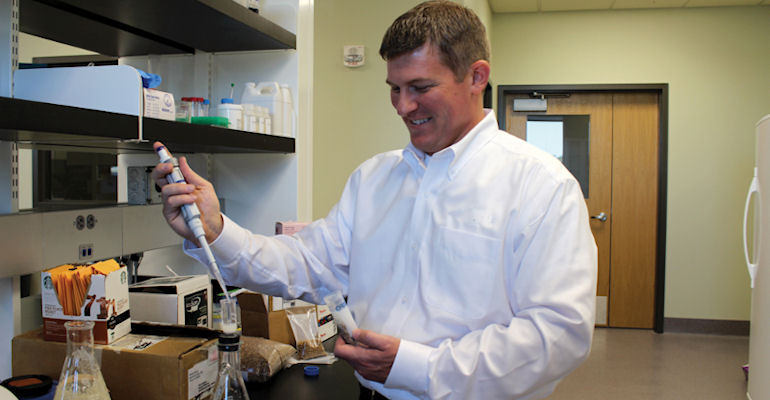Project seeks to see if wheat gluten has changed
Research seeks way for celiacs to be able to consume gluten without harmful effects to body.
December 27, 2016

While most people with celiac disease would like to be able to eat wheat, any gluten they digest automatically damages their small intestine. That's why Dr. Chris Miller, a former faculty member in the department of grain science and industry at Kansas State University who is now director of wheat quality research at Heartland Plant Innovations, is trying to come up with a way for celiacs to be able to consume gluten without the repercussions on their body.
While the long-term goal is to develop a wheat that would be safe for people with celiac disease to eat, this research is only the first step on that journey. Miller said, "We are characterizing wheat proteins important for both health and nutrition, all the way to product quality, to give us a better understanding of celiac disease and protein reactivity."
The research began with studying different wheat varieties from the Kansas State University breeding program in what's called a diversity panel because of the wide range of genetic diversity throughout the wheat plants studied. That involved 50 hard red winter wheat lines, which are made up of commercial varieties - ones that are currently grown, older varieties that were grown years ago but not planted much anymore and wild relatives of wheat - in addition to 50 hard red spring wheat lines that do not come from Kansas but show wheat quality related to the breeding program.
"With these different varieties, we can get a broad understanding of how genetics change over time or if they have changed through our breeding selection," Miller said.
Miller and his colleagues started by characterizing the varieties' traits from the field all the way through their protein characterization, their genetic makeup (which involves the plants' genotypes), end-product testing (which examines the plants' milling and baking qualities) and health and nutritional attributes.
Their research is in its third year, and they still don't have the answers they need. "It's a really slow, long process. Growing plants in the field is a slow process — gathering the tissue, gathering the seed, getting the milling, getting all the product quality. It has just been incredibly slow," Miller said.
The researchers should be getting data in January on all of the wheat plants tested, which should lead to answers to many of their questions. At this point, they are not sure what those answers will be.
Aaron Harries, vice president of research and operations at Kansas Wheat, said this is discovery research. "We're not sure what we are going to find. The first stage is the exploratory stage and getting a base knowledge about wheat proteins. There's a lot of optimism but a lot of uncertainty," Harries said. Once they get the base knowledge completed, he said the researchers will be able to learn more about the varieties.
Kansas wheat farmers are funding this research project through the Kansas Wheat Commission's 2 cents/bu. wheat assessment. In terms of research in general, the funding is small. "We're getting about $130,000 per year, but we could easily use a million," Miller said. He stated that within the next year, they will have collected enough data and proof of concept that they should be able to apply for more funding opportunities.
After the preliminary research is completed, it may be necessary to collaborate with medical partners in order to reach the long-term goal: to help those with celiac disease be able to consume wheat products without any digestive problems.
"This is a study that's focused for the good of all human health. We're doing research here that they aren't doing anywhere else," Jordan Hildebrand, program assistant at Kansas Wheat, said. "The fact that Kansas wheat farmers took the initiative to fund the research showed their foresight and their desire to deliver a wholesome product for everyone who wants to have their bread and eat it too."
**Written by Hannah Schlapp, Kansas Wheat communications intern.
You May Also Like


.png?width=300&auto=webp&quality=80&disable=upscale)
